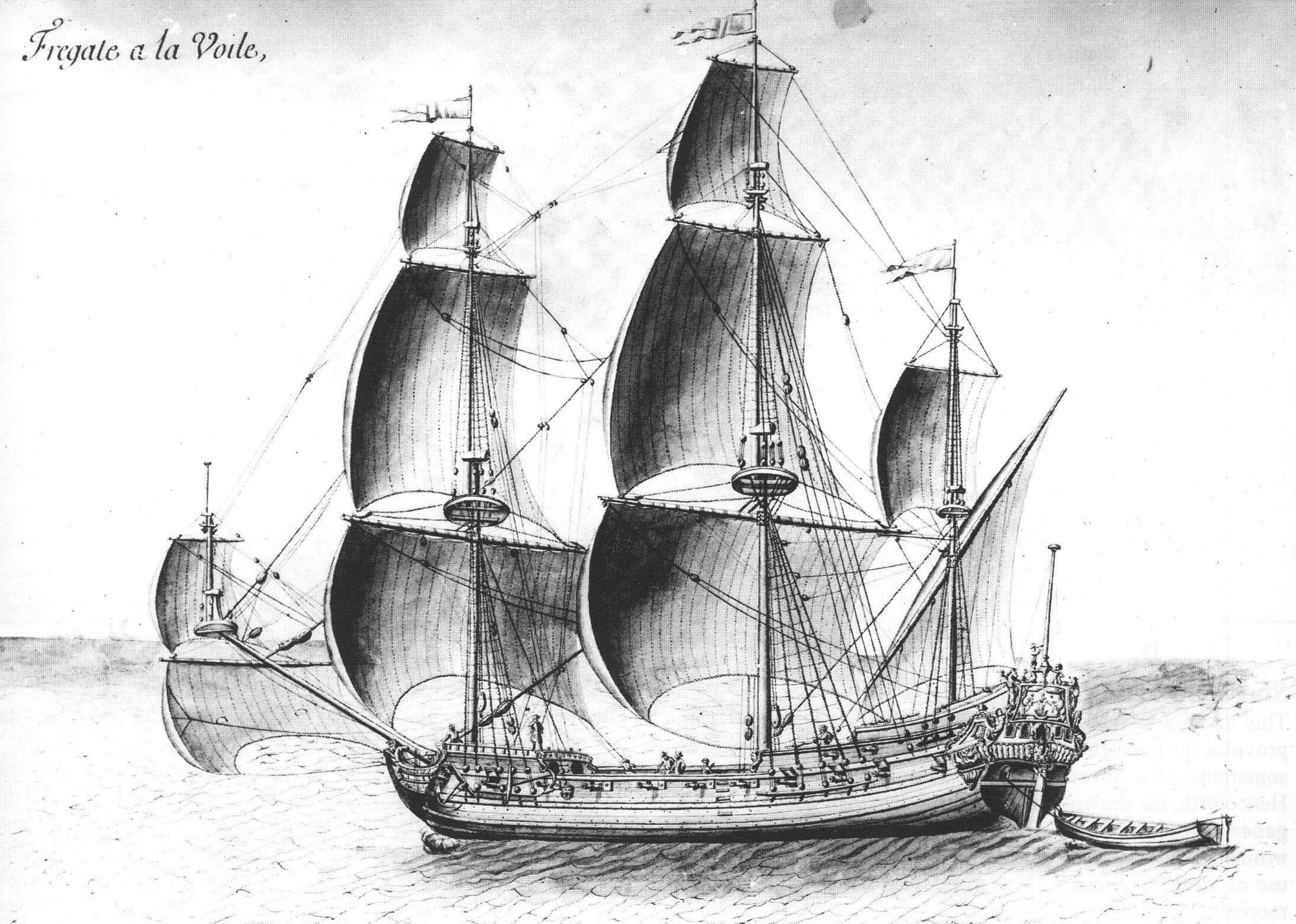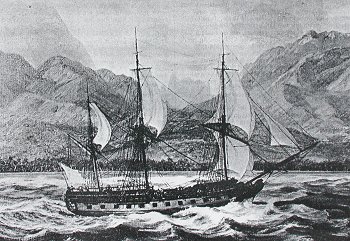|
Cocarde Class Frigate
The ''Cocarde'' class was a class of three 40-gun/12-pounder frigates of the French Navy. They were designed by Pierre Duhamel in 1793.Winfield & Roberts, p. 130 * ''Cocarde Nationale'' :Builder: St Malo :Ordered: 16 May 1793 :Laid down: August 1793 :Launched: 29 April 1794 :Completed: July 1794 :Fate: Deleted 14 June 1803 * ''Régénérée'' :Builder: St Malo :Ordered: 16 May 1793 :Laid down: September 1793 :Launched: 1 November 1794 :Completed: April 1795 :Fate: captured by British Navy 27 September 1801 at Alexandria, becoming HMS ''Alexandria''. * ''Bravoure'' :Builder: St Servan :Ordered: :Laid down: October 1793 :Launched: November 1795 :Completed: November 1796 :Fate: run ashore near Leghorn to avoid capture 1 September 1801. Citations Bibliography *Winfield, Rif and Roberts, Stephen S. (2015) ''French Warships in the Age of Sail 1786-1861: Design, Construction, Careers and Fates.'' Seaforth Publishing. {{ISBN, 978-1-84832-204-2. Cocarde A cockade is a kno ... [...More Info...] [...Related Items...] OR: [Wikipedia] [Google] [Baidu] |
Builder's Old Measurement
Builder's Old Measurement (BOM, bm, OM, and o.m.) is the method used in England from approximately 1650 to 1849 for calculating the cargo capacity of a ship. It is a volumetric measurement of cubic capacity. It estimated the tonnage of a ship based on length and maximum beam. It is expressed in "tons burden" ( en-em , burthen , enm , byrthen ), and abbreviated "tons bm". The formula is: : \text = \frac where: * ''Length'' is the length, in feet, from the stem to the sternpost; * '' Beam'' is the maximum beam, in feet. The Builder's Old Measurement formula remained in effect until the advent of steam propulsion. Steamships required a different method of estimating tonnage, because the ratio of length to beam was larger and a significant volume of internal space was used for boilers and machinery. In 1849, the Moorsom System was created in the United Kingdom. The Moorsom system calculates the cargo-carrying capacity in cubic feet, another method of volumetric measurem ... [...More Info...] [...Related Items...] OR: [Wikipedia] [Google] [Baidu] |
Naval Long Gun
In historical naval usage, a long gun was the standard type of cannon mounted by a sailing vessel, so called to distinguish it from the much shorter carronades. The long gun was known for its increased range and improved mobility in comparison to its larger precursors. This allowed the long gun to establish itself as the best form of artillery to pursue an enemy. In informal usage, the length was combined with the weight of shot, yielding terms like "long nines", referring to full-length, 9-pounder guns. Firing a long gun Cannons are fired through a laborious process that involves the help of many people. It begins by cleaning out the barrel of the cannon with a wet swab. This helps to ensure that any left over embers from the last firing are extinguished before the gunpowder is put in. Once the barrel is clean, the gunpowder is put into the base of the cannon, either loosely or in cloth bags. A piece of cloth or rope is put in after the gunpowder to assure that it stays tightly ... [...More Info...] [...Related Items...] OR: [Wikipedia] [Google] [Baidu] |
Frigates
A frigate () is a type of warship. In different eras, the roles and capabilities of ships classified as frigates have varied somewhat. The name frigate in the 17th to early 18th centuries was given to any full-rigged ship built for speed and maneuverability, intended to be used in scouting, escort and patrol roles. The term was applied loosely to ships varying greatly in design. In the second quarter of the 18th century, the 'true frigate' was developed in France. This type of vessel was characterised by possessing only one armed deck, with an unarmed deck below it used for berthing the crew. Late in the 19th century (British and French prototypes were constructed in 1858), armoured frigates were developed as powerful ironclad warships, the term frigate was used because of their single gun deck. Later developments in ironclad ships rendered the frigate designation obsolete and the term fell out of favour. During the Second World War the name 'frigate' was reintroduced to de ... [...More Info...] [...Related Items...] OR: [Wikipedia] [Google] [Baidu] |
French Navy
The French Navy (french: Marine nationale, lit=National Navy), informally , is the maritime arm of the French Armed Forces and one of the five military service branches of France. It is among the largest and most powerful naval forces in the world, ranking seventh in combined fleet tonnage and fifth in number of naval vessels. The French Navy is one of eight naval forces currently operating fixed-wing aircraft carriers,Along with the U.S., U.K., China, Russia, Italy, India and Spain with its flagship being the only nuclear-powered aircraft carrier outside the United States Navy, and one of two non-American vessels to use catapults to launch aircraft. Founded in the 17th century, the French Navy is one of the oldest navies still in continual service, with precursors dating back to the Middle Ages. It has taken part in key events in French history, including the Napoleonic Wars and both world wars, and played a critical role in establishing and securing the French ... [...More Info...] [...Related Items...] OR: [Wikipedia] [Google] [Baidu] |
Pierre Duhamel
Pierre is a masculine given name. It is a French form of the name Peter. Pierre originally meant "rock" or "stone" in French (derived from the Greek word πέτρος (''petros'') meaning "stone, rock", via Latin "petra"). It is a translation of Aramaic כיפא (''Kefa),'' the nickname Jesus gave to apostle Simon Bar-Jona, referred in English as Saint Peter. Pierre is also found as a surname. People with the given name * Abbé Pierre, Henri Marie Joseph Grouès (1912–2007), French Catholic priest who founded the Emmaus Movement * Monsieur Pierre, Pierre Jean Philippe Zurcher-Margolle (c. 1890–1963), French ballroom dancer and dance teacher * Pierre (footballer), Lucas Pierre Santos Oliveira (born 1982), Brazilian footballer * Pierre, Baron of Beauvau (c. 1380–1453) * Pierre, Duke of Penthièvre (1845–1919) * Pierre, marquis de Fayet (died 1737), French naval commander and Governor General of Saint-Domingue * Prince Pierre, Duke of Valentinois (1895–1964), father ... [...More Info...] [...Related Items...] OR: [Wikipedia] [Google] [Baidu] |
French Frigate Cocarde (1794)
The ''Cocarde'' ("Cockade") was a 40-gun ''Cocarde'' class frigate of the French Navy The French Navy (french: Marine nationale, lit=National Navy), informally , is the maritime arm of the French Armed Forces and one of the five military service branches of France. It is among the largest and most powerful naval forces in th .... Ordered as ''Cocarde nationale'', she was launched on 29 April 1794 in Saint Malo and commissioned in July under Lieutenant Allanic. Under Captain Quérangal, she took part in the Battle of Groix. She later took part in the Expédition d'Irlande. She was renamed ''Cocarde'' in June 1796. In 1802, she served in the Caribbean. A series of beachings damaged her sails and hull to the point where she was condemned and broken up in 1803. Sources and references * {{DEFAULTSORT:Cocarde Cocarde-class frigates Age of Sail frigates of France 1794 ships ... [...More Info...] [...Related Items...] OR: [Wikipedia] [Google] [Baidu] |
French Frigate Régénérée (1794)
''Régénérée'' was a 40-gun ''Cocarde''-class frigate of the French Navy. The British captured her in 1801 at the fall of Alexandria, named her HMS ''Alexandria'', sailed her back to Britain, but never commissioned her. She was broken up in 1804. Service In 1796, she was commanded by captain Willaumez, in a squadron under Sercey. On 15 May 1796 '' ''Forte'' '', ''Vertu'', ''Seine'', and ''Régénérée'' were cruising between St Helena and the Cape of Good Hope hoping to capture British East Indiamen when they encountered the British whaler on her way to Walvis Bay. The French took off her crew, except for two seamen and a boy, and put ''Forte''s fourth officer and 13-man prize crew aboard ''Lord Hawkesbury'' with orders to sail to Île de France. On her way there one of the British seamen, who was at the helm, succeeded in running her aground on the east coast of Africa a little north of the Cape, wrecking her. There were no casualties, but the prize crew became Britis ... [...More Info...] [...Related Items...] OR: [Wikipedia] [Google] [Baidu] |
HMS Alexandria (1801)
Four ships that served the Royal Navy have borne, or were intended to bear, the name HMS ''Alexandria'', after the city in Egypt: * HMS ''Alexandria'' (1801) was the French frigate ''Régénérée'', captured at Alexandria in 1801, renamed, and then broken up in 1804. * ''Alexandria'' was a tender that served between 1802 and 1803. * was a fifth-rate frigate launched in 1806 and broken up 1818. * HMS ''Alexandria'' (1943) was a River-class frigate The River class was a class of 151 frigates launched between 1941 and 1944 for use as anti-submarine convoy escorts in the North Atlantic. The majority served with the Royal Navy and Royal Canadian Navy (RCN), with some serving in the other ... ordered at Montreal in 1943. However, the order was cancelled in December. {{DEFAULTSORT:Alexandria Royal Navy ship names ... [...More Info...] [...Related Items...] OR: [Wikipedia] [Google] [Baidu] |
French Frigate Bravoure (1795)
''Bravoure'' ("Bravery") was a 40-gun of the French Navy. She was launched in November 1795 in Saint Servan. She took part in the Expédition d'Irlande, and later served in Ganteaume's squadron. On 28 January 1801, she fought an indecisive battle against . In June of the same year, under commander Dordelin, she ferried artillery pieces from Toulon to Elba with ''Succès''; on the way back, she encountered HMS ''Concorde'' again in the Tyrrhenian Sea on 10 September 1801, but this time ''Concorde'' was accompanied by two other frigates. To avoid capture, she beached herself off Elba and became a total loss In insurance claims, a total loss or write-off is a situation where the lost value, repair cost or salvage cost of a damaged property exceeds its insured value, and simply replacing the old property with a new equivalent is more cost-effecti ....Roche, p.84 Citations References * {{DEFAULTSORT:Bravoure (1795) Cocarde-class frigates Age of Sail frigates of Fra ... [...More Info...] [...Related Items...] OR: [Wikipedia] [Google] [Baidu] |
Frigate Classes
A frigate () is a type of warship. In different eras, the roles and capabilities of ships classified as frigates have varied somewhat. The name frigate in the 17th to early 18th centuries was given to any full-rigged ship built for speed and maneuverability, intended to be used in scouting, escort and patrol roles. The term was applied loosely to ships varying greatly in design. In the second quarter of the 18th century, the 'true frigate' was developed in France. This type of vessel was characterised by possessing only one armed deck, with an unarmed deck below it used for berthing the crew. Late in the 19th century (British and French prototypes were constructed in 1858), armoured frigates were developed as powerful ironclad warships, the term frigate was used because of their single gun deck. Later developments in ironclad ships rendered the frigate designation obsolete and the term fell out of favour. During the Second World War the name 'frigate' was reintroduced t ... [...More Info...] [...Related Items...] OR: [Wikipedia] [Google] [Baidu] |

